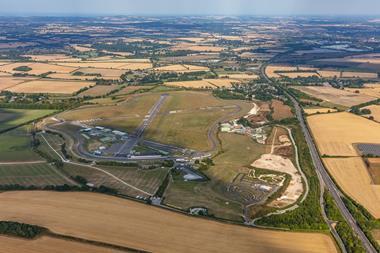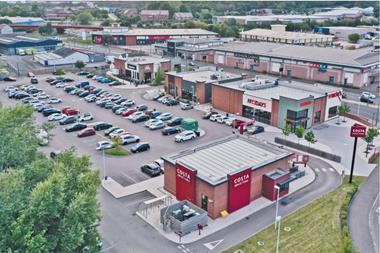Things move fast in the digital world and there are few better examples of this than the pace of change seen in ecommerce and the growth in online shopping.

Consumers have become increasingly demanding and are placing ever more emphasis on speed of delivery. Recent reports suggest that nearly 40% of online deliveries are next-day or specified-day services compared with an average delivery time of three to four business days a few years ago.
The result is dynamic and rapidly evolving supply chain networks and a UK real estate industry that is educating itself in supply chain science and the mechanics of a hub-and-spoke network. Logistics investors have to fully understand the operational model and interaction between each element to ensure they own and create fit-for-purpose real estate.
A subsector that increasingly deserves its own classification is last-mile or urban logistics. This subsector has attracted heightened investor and occupier interest because parcel volumes have increased significantly.
Research commissioned by LondonMetric has identified 21 locations across the UK where at least four of the five major third-party parcel logistics companies – UK Mail, DPD, TNT, FedEx and UPS – are present. These include core distribution locations such as Milton Keynes and large cities such as
Last-mile or urban logistics has attracted heightened investor interest because parcel volumes have increased
Leeds, but also less recognised distribution locations including Inverness, Swansea and Carlisle. What these places all have in common is their proximity to population centres, which is key for operators seeking to cut the operational cost of short delivery times.
This sensitivity around profitability in relation to transportation costs in supply-starved locations has been a key driver for our recent investment and development activity in urban logistics. This part of the portfolio has grown quickly to about £300m, creating an end-to-end logistics platform totalling about £1bn and replicating the UK hub-and-spoke distribution network. Our investments are delivering good returns through a combination of contractual income uplifts, strong market rental growth and asset value growth.

The market continues to see strong rental outperformance of the ‘spoke’ against the ‘hub’. The transportation costs of running a network of 200 vans delivering individual products versus 20 heavy-goods vehicles delivering pallets has a bigger potential effect on operational costs than the rent payable in the right location.
Our targeted investment strategy in South East locations has generated strong rental growth, underpinned by the dynamics of tight supply and significant occupier demand.
However, we are seeing these dynamics at play in other undersupplied locations in the UK with, for example, rental growth of about 80% at Inverness over a five-year period, as recorded by Colliers International.
Where does that leave us? Predictions are difficult in a market that is moving at such a fast rate. We can be certain, though, that the end-to-end logistics network will continue to evolve. As parcel volumes grow further and consumer demand for instant gratification intensifies, operators are seeking to further optimise location efficiencies to reduce delivery times and operational costs. Consequently, we expect urban logistics to be a clear winner.
Sam Pringle is a portfolio manager at LondonMetric
All well and good in the industrial and logistics sector
- 1
- 2
- 3
- 4
- 5
- 6
- 7
- 8
 Currently reading
Currently readingThe importance of being urban
- 9
- 10









































No comments yet